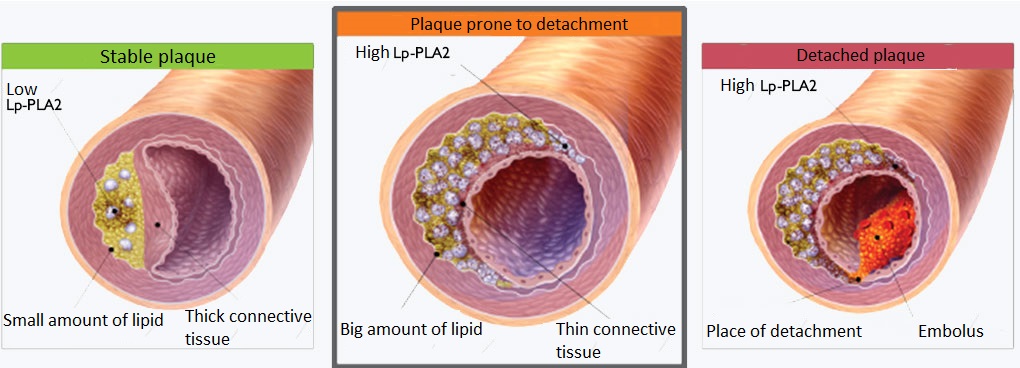PLAC test (Lp-PLA2)
The PLAC test can be used to determine the risk of developing cardiovascular disease, coronary heart disease, and ischemic stroke (i.e. insufficient blood supply to the heart muscle) from a blood sample. The test measures levels of the phospholipase (Lp-PLA2) enzyme linked to lipoprotein, which may indicate vasculitis and contribute to atherosclerosis and the formation of plaques prone to detachment.
The Lp-PLA2 enzyme is formed in plaque deposited on the vessel wall, so the test is much more specific and independent from other risk factors (e.g. obesity, rheumatic diseases, inflammations). These plaques can also cause the narrowing and blockage of the blood vessel, and pieces detached from the plaques can cause a heart attack, pulmonary embolism in the lungs, and ischemic stroke in the brain. Ischemic stroke is the most common cerebrovascular accident.

The risk of developing these plaques is greatly increased by certain conditions and diseases, such as high blood pressure, metabolic syndrome, diabetes, smoking, high cholesterol levels, obesity, and inflammation of the blood vessel wall. However, it happens that unstable, fatty plaques form on the vessel wall without the presence of the listed risk factors. Early detection of the risks posed by deposits is helped by the PLAC test by determining Lp-PLA2 enzyme levels.
What does the test show?
The PLAC test can be used to determine the risk of developing coronary artery disease as well as ischemic stroke.
In which cases is it recommended to perform the test?
This test is recommended if you have a moderate to high risk of developing coronary heart disease or ischemic stroke. Patients with a family history of cardiovascular disease or hypertension are at risk.
What sample is needed for the test?
A blood sample taken from a vein is needed to perform the test.
The test does not require any preparation on the part of the patient.
What can the result indicate?
In case of elevated Lp-PLA2 levels, the patient belongs to the group at high risk for the development of coronary artery disease or ischemic stroke. In such cases, more frequent monitoring, reduction of LDL cholesterol, and antilipid therapy, the optimal use of which will be determined by your doctor, are recommended after further testing.
If the result is below the cut-off value, the patient can be classified into a low-risk group.
In many cases, due to therapy, an elevated value does not cause the above-mentioned diseases, but a low value is not a guarantee that they will not occur later.
What to do after the test?
The finding alone is not a diagnosis, therefore always consult your doctor or the specialist who ordered the test to evaluate it and determine the necessary therapy.

